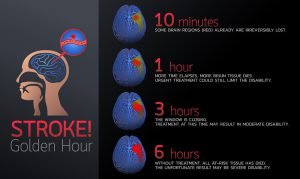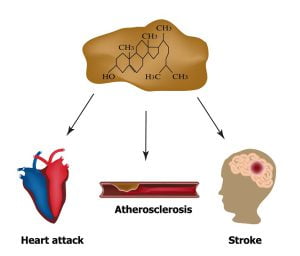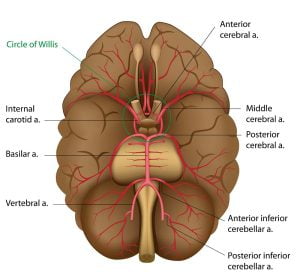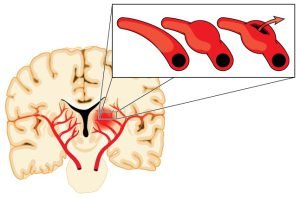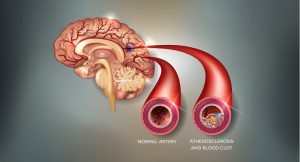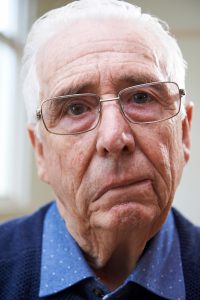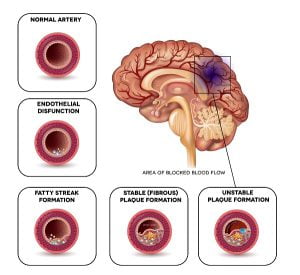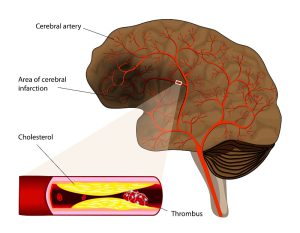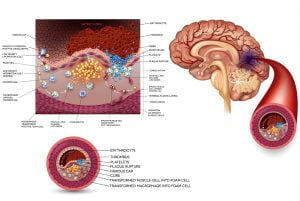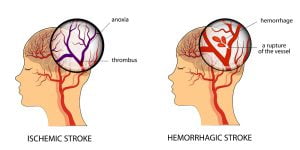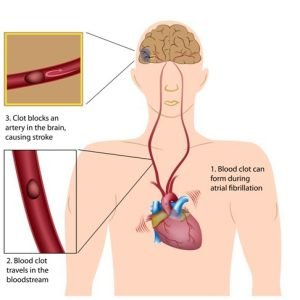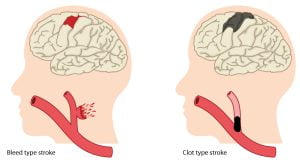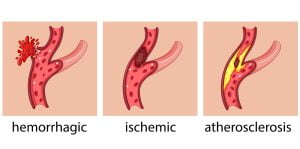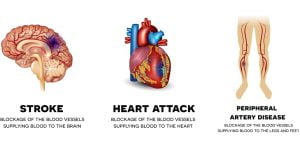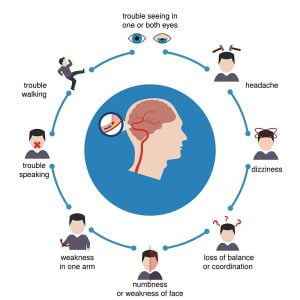Browsing: Stroke Graphics
Comprehensive Information, Resources, and Support on Stroke
The first few hours after a stroke are quite critical. If immediate medical help is provided to the patient then chances of brain damage decreases and the patient may recover faster.
If your cholesterol levels are very high, then you are at risk of developing various circulartory disorders such as heart attack, stroke and artherosclerosis.
<hr The entire blood supply of the brain and spinal cord depends on two sets of branches from the dorsal aorta. The vertebral arteries arise from the subclavian arteries, and the internal carotid arteries are branches of the common carotid
Blood vessels in the brain start bulging and rupturing due to an aneurysm which leads to leaking of blood into the cerebral hemisphere causing a stroke.
This image represents a collection of CT scan of brain and images of various brain diseases (Left to Right : Normal brain, Brain tumor, Cerebral infarction, Intracerebral hemorrhage)
The most common signs of stroke involves paralysis and trouble speaking or understanding speech, which is shown in this image as an arbitrary illustration. If you notice any such signs, you must call the doctor immediately.
This image represents a collection of CT scan of brain and images of various brain diseases (Left to Right : Normal brain, Brain tumor, Cerebral infarction, Intracerebral hemorrhage)
Stroke in the cerebral artery slowly progresses to atherosclerosis by the deposition of fatty streak. This results in thrombus in the artery.
Numbness or weakness in your face, arm, or leg, particularly on one side, confusion or trouble understanding people, difficulty in speaking or seeing with one or both eyes, problems in walking or staying balanced or coordinated, dizziness, headache that comes on for no reason are common warning signs of a stroke.
This picture represents an ischemic stroke in the cerebral artery. An unstable plaque formation and thrombus in the blood vessels leads to atherosclerosis.
<hrThis picture represents an ischemic stroke in the cerebral artery. An unstable plaque formation and thrombus in the blood vessels leads to atherosclerosis.
This diagram shows the effect on blood vessels in brain during ischemic and hemorrhagic stroke.
Atrial fibrillation is a type of irregular heartbeat, which usually occurs in the two upper chambers of the heart. These irregular heartbeats can lead to blood clot in the heart and potentially form a clot, which can travel to a person’s brain and cause a stroke.
Two causes of stroke – a bleed type stroke (hemorrhagic stroke) and a clot type stroke (ischemic stroke).
This image represents difference in the appearance of blood vessels during a stroke or during atherosclerosis. An ischemic stroke occurs due to blockage of blood flow by a blood clot. A hemorrhagic stroke occurs when a blood vessel in your brain ruptures or breaks.
One of the complications of diabetes is a heart attack. Type 1 diabetes in creases the risk for heart disease significantly. Heart attacks and other cardiovascular complications cause the death of almost 3 out of every 4 people with type 1 diabetes.
The common symptoms of stroke include paralysis, spasticity, changes in senses, memory, attention, or perception problems, depression, fatigue, vision problems and behavior changes.
ADVERTISEMENT




